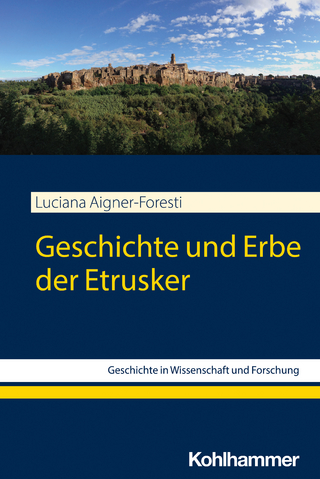
Archaeologies of Animal Movement. Animals on the Move
Springer International Publishing (Verlag)
978-3-030-68746-5 (ISBN)
With the recent development of fine-tuned methodologies such as stable isotope analysis and physical activity assessment, the potential to understand how animals moved about in the past has increased substantially. While the chapters in the volume utilize a wide range of archaeological methods, they are all united by an emphasis on understanding animal activity and mobility patterns as something that has a major impact on human societies and human-animal relationships. Chapters in this volume show that animal activity patterns provide information on multiple aspects of human-animal relationships, including analysis of animal management practices, transhumance, global and regional trade networks, and animal domestication. This volume is of interest to scholars working in zooarchaeology and early human societies.
lt;p>Anna-Kaisa Salmi is an Academy Research Fellow and Associate professor in Archaeology at the University of Oulu. Her research interests include northern human-animal relationships, the roles of animals in ritual and religion, and working animals. She currently leads ERC and Academy of Finland funded project on reindeer domestication.
Sirpa Niinimäki is a postdoctoral researcher in Archaeology at the University of Oulu. She is working on methodological aspect of skeletal activity markers as well as their utilization on archaeological material. Her study species include both human and reindeer skeleton.
Chapter 1. Reindeer on the move: An introduction to the archaeology of animal movement.- Chapter 2. Scaling with size in horses may have implications for reconstructing activity from entheseal changes.- Chapter 3. Preliminary reflections on horse - Human-horse relationships among the Slavs of the Early Medieval Poland read from history and archaeozoology.- Chapter 4. Pathological peculiarities between modern ecotypes of Fennoscandian reindeer: Injury patterns and implications for domestication and paleoecology studies.- Chapter 5. Reindeer physical activity patterns and reconstruction of feeding behavior: Implications for reindeer domestication and human-reindeer interaction.- Chapter 6. Feeding patterns and management of dogs and chickens from ancient to medieval sites of Ukraine: a stable isotope analysis.- Chapter 7. Complex cattle exchange in the Scandinavian Funnel Beaker Culture. The case of Falbygden, Sweden.- Chapter 8. Animals, households, and communities in Bronze and IronAge Central Eurasia.- Chapter 9. Spread of foreign cattle in Lithuania in the Late Medieval and Early Modern Periods.- Index.
| Erscheinungsdatum | 02.07.2022 |
|---|---|
| Reihe/Serie | Themes in Contemporary Archaeology |
| Zusatzinfo | VII, 106 p. 41 illus., 19 illus. in color. |
| Verlagsort | Cham |
| Sprache | englisch |
| Maße | 210 x 279 mm |
| Gewicht | 304 g |
| Themenwelt | Geisteswissenschaften ► Archäologie |
| Geschichte ► Allgemeine Geschichte ► Altertum / Antike | |
| Sozialwissenschaften ► Ethnologie | |
| Schlagworte | Animal Domestication • Animal Mobility in archaeology • Animals, Households, and Communities in Bronze and Iron Age • Cattle exchange in the Scandinavian Funnel Beaker Culture • Domesticated animals in archaeology • Environmental Archaeology • Feeding patterns and management of chickens in archaeology • Feeding patterns and management of dogs in archaeology • Horse - human relationship in Early Medieval Poland • human-animal relationships • Human-Animal Studies • Modern ecotypes of Fennoscandian reindeer • Multispecies Archaeology • Paleopathology • Physical Activity Reconstruction • Reindeer physical activity patterns in archaeology • Spread of foreign cattle in Lithuania • Stable Isotope Analysis • Stable isotope analysis of animals • Zooarchaeology |
| ISBN-10 | 3-030-68746-5 / 3030687465 |
| ISBN-13 | 978-3-030-68746-5 / 9783030687465 |
| Zustand | Neuware |
| Informationen gemäß Produktsicherheitsverordnung (GPSR) | |
| Haben Sie eine Frage zum Produkt? |
aus dem Bereich


